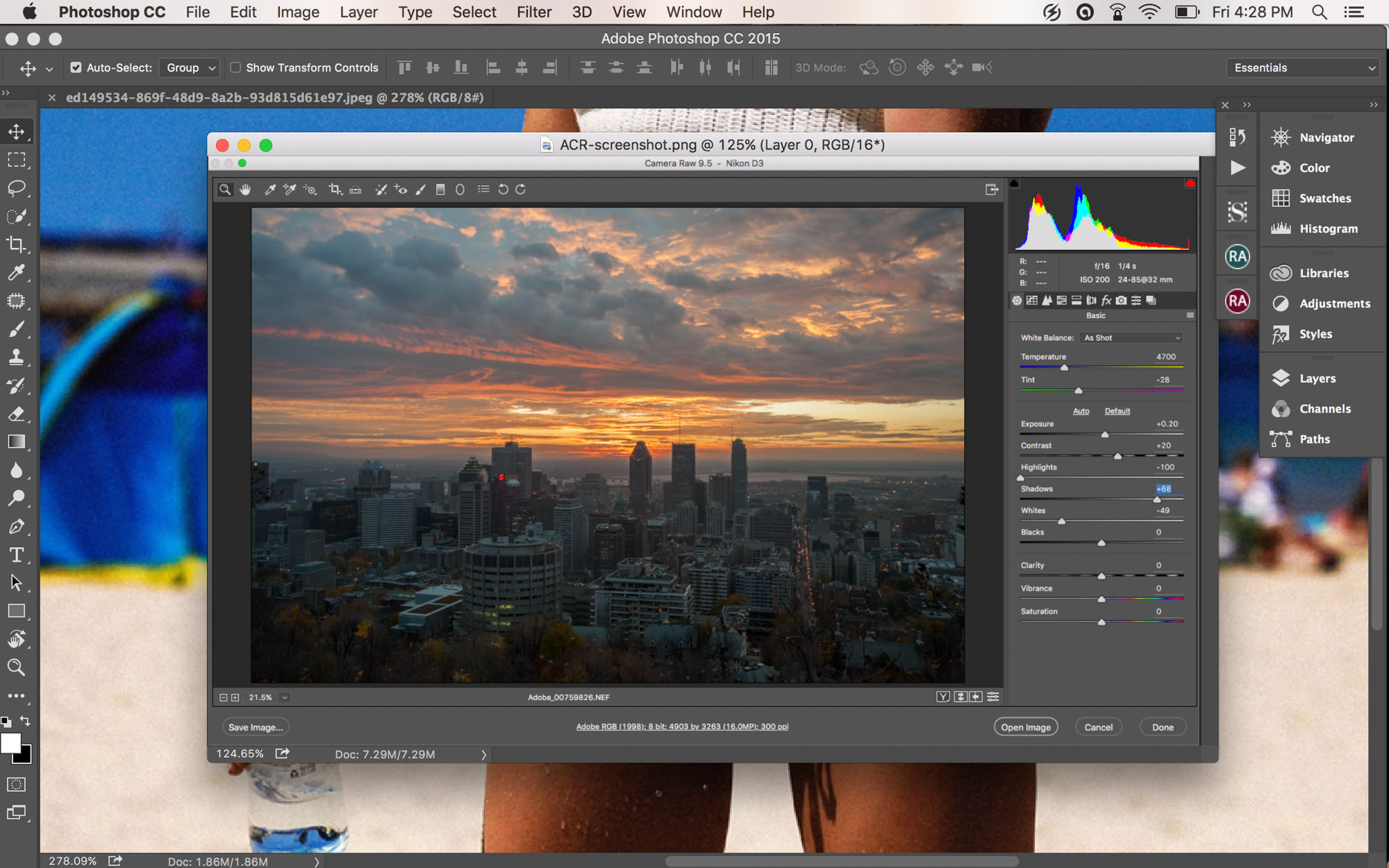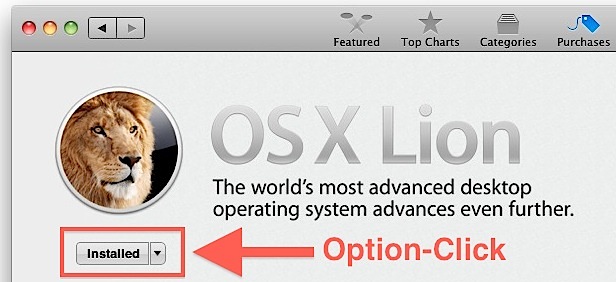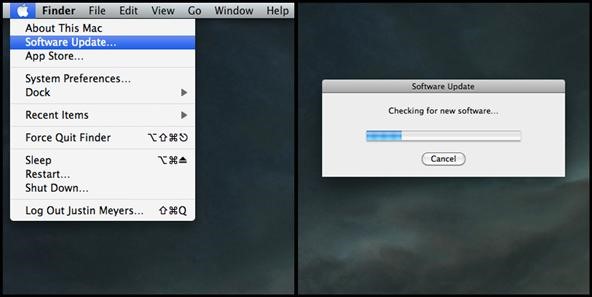In the finder, navigate to /Applications. Change the name of the directory, Lion (that you just created and moved 3.7GB of files into) to Install Mac OS X Lion.app. The command 'find.print' spits out a list of all directories and files visible from the directory in which this is executed. I then spent 3 hours on the phone with 5 different people trying to figure this out. To their credit one of the techs tried in vain to find a direct download link outside of the App Store. Finally the last tier, a Senior Supervisor explained that there is no way to download OS X Lion from the App Store. MacOS Sierra Installer. This is the official macOS Sierra Installer from the Mac App Store. Un-archive the zip and you will get the.app for installing Sierra. A bootable ISO or bootable USB can be made from this installer. Instructions on how to do that are on the Internet/Youtube.
- Mac Os X Lion App Store Download Location Download
- Mac Os Lion Free
- Mac Os Lion App Store
- Mac Os Lion Iso Download
- Mac Os X Lion App Store Download Location Settings
The shell path for a user in macOS or OSX is a set of locations in the filing system whereby the user has permissions to use certain applications, commands and programs without the need to specify the full path to that command or program in the Terminal. This will work in macOS Mojave, Sierra and all older OSX operating systems; El Capitan, Yosemite, Mavericks and Lion.
Mac Os X 10.10 Download Free
- How to download older Mac OS X versions via the App Store. If you once had purchased an old version of Mac OS X from the App Store, open it and go to the Purchased tab. There you’ll find all the installers you can download. However, it doesn’t always work that way.
- GetinMac is The Apple Mac OS X Software & Games Website. You Can Download Best Free Apps For Mac, mac software download sites, free paid mac apps.
- If you’ve heard the phrase, “Once you go Mac, you never go back,” you know it holds true. Macs are premium devices with amazing features, awesome apps, and top-notch desktop programs.
Mac OS X Yosemite 10.10 is another product in Apple’s line of Mac OS X. Apple, in its line of amazing Mac OX titles, launched the Mac OS Yosemite 10.10 which took the world by storm. It’s new improved features allow even greater synchronization between iPhones and Macs when using the Internet.
So instead of running something like this, with a path to the command:
You can just type the command, regardless of where you are in the filing system:
Deploy and configure the new OneDrive sync app for Mac. Learn how administrators can deploy the sync app on OS X to users in their enterprise environment. OneDrive release notes. Release notes about the sync app. Invalid file names and file types in OneDrive, OneDrive for Business, and SharePoint.
- Path Finder has some good features such as a dual pane view and tabs. The Drop Stack feature is useful, and batch rename function. Its also highly customisable. However the app is quite buggy - performing like a Beta version. I find that when transferring files in P.F. It affects both audio & video playback.
- Related: How to Copy File or Folder Path on Mac OS X; Show Current Path in Mac OS X Finder. To show the current path in Mac OS X finder, you have two ways. The first is to use the build in option and the second is that use the hidden terminal tweak. First Method: Using Finder. To start off, open up the Finder window, navigate to 'View' and then.
Your shell path is a bunch of absolute paths of the filing system separated by colons :
The module allows a fast and easy calculation of the geometry and strength of involute splines according to DIN 5480 (03/2006), DIN 5482 (03/1973), ISO 4156 (10/2005), ANSI B92.2M-1980 (R1989) and ANSI B92.1-1996. The geometry can be selected conveniently from a data base. Din 5482 spline specifications. You can select DIN 5482 sizes from database, or input all dimension data. Profile Database Database includes DIN 5482 standard dimensions of internal and external spline. Involute splines according to DIN 5480, DIN 5482, ISO 4156. DIN 5480 SPLINE DATA - GEAR & PULLEY ENGINEERING - ENG-TIPS Tue, 09 May 2017 14:24:00 GMT din 5480 spline data din 5480 spline data iaguy (mechanical) (op). Spline Data: pin. WN10 - Involute Splines according to DIN 5482 The program calculates span width and dimension over/between pins (min, max & values) from dimensions and the selected tolerance: pin. Internal and external spline teeth gears Internal.
You can find out whats in your path by launching Terminal in Applications/Utilities and entering:
And the result should be like this…
So this is stating that you can run Unix style applications or commands located in 5 default locations of a certain path in the filing system:
- /usr/bin
- /bin
- /usr/sbin
- /sbin
- /usr/local/bin
These directories are not visible by default in the filing system but you can make them visible.
Adding a Temporary Location
You can add extra locations to your path, in the mysql example above it’s location /usr/local/mysql/bin which is not in the default path, you can add it in Terminal like so:
So here I have copied my existing path and added the new location on the end. Test it by running echo $PATH again in the Terminal.
One of the disadvantages of this is that the new location will only be honored for that particular Terminal session, when a new Terminal window is launched it will have the original default path again.
Adding in a Permanent Location
To make the new pathstick permanently you need to create a .bash_profile file in your home directory and set the path there. This file control various Terminal environment preferences including the path.
Move into home directory
Create the .bash_profile file with a command line editor called nano
Path App For Mac Os X 10.10
Add in the above line which declares the new location /usr/local/mysql/bin as well as the original path declared as $PATH.
Save the file in nano by clicking ‘control’ +’o’ and confirming the name of the file is .bash_profile by hitting return. And the ‘control’+’x’ to exit nano
So now when the Terminal is relaunched or a new window made and you check the the path by

You will get the new path at the front followed by the default path locations, all the time
Rearranging the default $PATH
If you needed to rearrange the paths in the default $PATH variable, you can just do that and leave off $PATH.
So lets say you want /use/local/bin at the beginning to take precedence you can add the default path like so inside .bash_profile
And then you can slot in other paths as required.
These advanced steps are primarily for system administrators and others who are familiar with the command line. You don't need a bootable installer to upgrade macOS or reinstall macOS, but it can be useful when you want to install on multiple computers without downloading the installer each time.
Download macOS
Find the appropriate download link in the upgrade instructions for each macOS version:
macOS Catalina, macOS Mojave, ormacOS High Sierra
Installers for each of these macOS versions download directly to your Applications folder as an app named Install macOS Catalina, Install macOS Mojave, or Install macOS High Sierra. If the installer opens after downloading, quit it without continuing installation. Important: To get the correct installer, download from a Mac that is using macOS Sierra 10.12.5 or later, or El Capitan 10.11.6. Enterprise administrators, please download from Apple, not a locally hosted software-update server.
OS X El Capitan
El Capitan downloads as a disk image. On a Mac that is compatible with El Capitan, open the disk image and run the installer within, named InstallMacOSX.pkg. It installs an app named Install OS X El Capitan into your Applications folder. You will create the bootable installer from this app, not from the disk image or .pkg installer.
Mac Os X App Zapper
Use the 'createinstallmedia' command in Terminal
- Connect the USB flash drive or other volume that you're using for the bootable installer. Make sure that it has at least 12GB of available storage and is formatted as Mac OS Extended.
- Open Terminal, which is in the Utilities folder of your Applications folder.
- Type or paste one of the following commands in Terminal. These assume that the installer is still in your Applications folder, and MyVolume is the name of the USB flash drive or other volume you're using. If it has a different name, replace
MyVolumein these commands with the name of your volume.
Catalina:*
Mojave:*
High Sierra:*
El Capitan: - Press Return after typing the command.
- When prompted, type your administrator password and press Return again. Terminal doesn't show any characters as you type your password.
- When prompted, type
Yto confirm that you want to erase the volume, then press Return. Terminal shows the progress as the bootable installer is created. - When Terminal says that it's done, the volume will have the same name as the installer you downloaded, such as Install macOS Catalina. You can now quit Terminal and eject the volume.
* If your Mac is using macOS Sierra or earlier, include the --applicationpath argument, similar to the way this argument is used in the command for El Capitan.
Mac Os X Download
Use the bootable installer
After creating the bootable installer, follow these steps to use it:

- Plug the bootable installer into a compatible Mac.
- Use Startup Manager or Startup Disk preferences to select the bootable installer as the startup disk, then start up from it. Your Mac will start up to macOS Recovery.
Learn about selecting a startup disk, including what to do if your Mac doesn't start up from it. - Choose your language, if prompted.
- A bootable installer doesn't download macOS from the Internet, but it does require the Internet to get information specific to your Mac model, such as firmware updates. If you need to connect to a Wi-Fi network, use the Wi-Fi menu in the menu bar.
- Select Install macOS (or Install OS X) from the Utilities window, then click Continue and follow the onscreen instructions.
Learn more
For more information about the createinstallmedia command and the arguments that you can use with it, make sure that the macOS installer is in your Applications folder, then enter this path in Terminal:
Catalina:
Toyota techstream crack. Toyota Techstream V12.30.017 Software updated. This is a new updating after 12.20.024,check Toyota Techstream V12.30.017 12.2017 Full Crack Details Below. Size: 245mb Year / Release Date: 2017/12 Version: 12.30.017 System requirements: Windows XP-10 x32 & x64 Language: Multilingual (Russian is missing) Medicine: Present. TOYOTA Techstream V15.00.026 (02/2020) Driver MVCI for x64 OS - Link After installing the program to request keys enter your ID in this thread and I will give you the keys. Install Toyota Techstream 12.20.024 software. Open Toyota Tis Techstream 12.20.024 disk.
Mac Os X App Store
How To Update Mac Os X
Mojave:
High Sierra:
Path App For Mac Os X 10.7
El Capitan:
Mac Os X Apps

Use Software Update
- Choose System Preferences from the Apple menu , then click Software Update to check for updates.
- If any updates are available, click the Update Now button to install them. Or click “More info” to see details about each update and select specific updates to install. You might be asked to enter your administrator password.
- When Software Update says that your Mac is up to date, the installed version of macOS and all of its apps are also up to date. That includes Safari, Music, Photos, Books, Messages, Mail, Calendar, and FaceTime.
- To automatically install future updates, including for apps that you got from the App Store, select “Automatically keep my Mac up to date.” Your Mac will notify you when updates require it to restart, so you can always choose to install those later.
Update the software on your iPhone, iPad, or iPod touch
Learn how to update your iPhone, iPad, or iPod touch to the latest version of iOS or iPadOS.
Mac Os X Lion App Store Download Location Download

Mac Os Lion Free
Mac Os X App Cleaner
Mac Os Lion App Store
Learn more
Mac Os X Lion Download Apple
Mac Os Lion Iso Download
- Learn how to get updates for earlier versions of macOS that don't include Software Update preferences.
- You can also use the App Store to update apps or redownload apps that came from the App Store.
- Learn which macOS your Mac is using and how to upgrade to the latest macOS.
- When your Mac is connected to a Personal Hotspot, large updates don't download automatically.